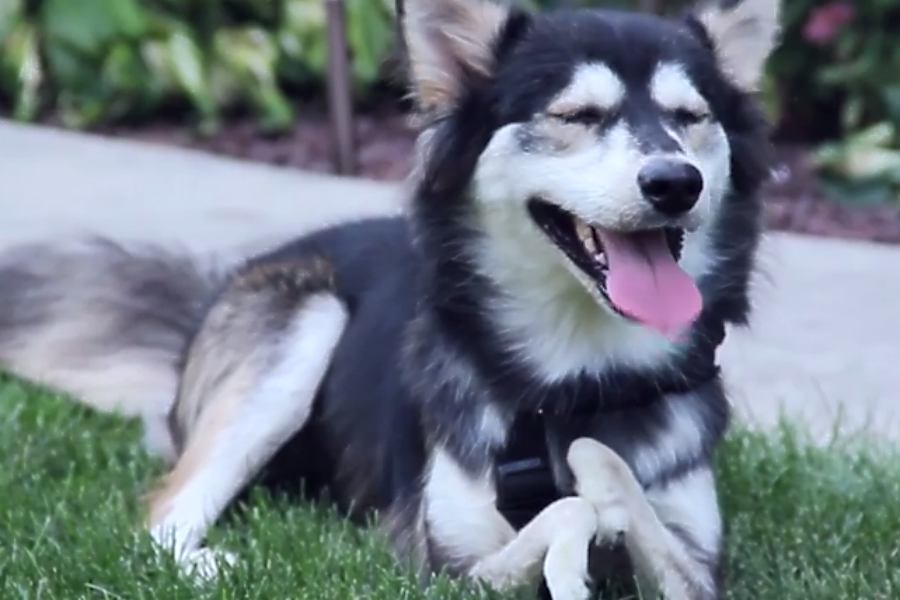Watch Derby the dog run on 3-D printer legs
Loading...
Derby the dog was born with small forearms and no front paws. Now, the 1-year-old dog runs several miles each day, thanks to his 3-D-printed prosthetic legs.
Tara Anderson, who first took in Derby from foster care, initially tried other methods of helping the dog to walk, including attaching him to a two-wheeled cart. But she found Derby couldn’t play well with other dogs with the bulky equipment.
Fortunately for Derby, Ms. Anderson works for a South Carolina company that specializes in 3-D printers. And in September, Derby received his first set of prosthetic legs.
Prosthetic legs, even for dogs, are nothing new. But the speed and low cost with which 3-D printing enables their production is a notable development in the field of prosthetics — and moreover, developers can keep tweaking the computer designed model until it works perfectly.
That’s what happened for Derby.
The first set of legs wasn't quite right — the dog had trouble balancing, according to the dog’s Facebook page.
But future rounds came a lot closer. A subsequent set was fashioned into ridged, half-moon ovals that fastened over his front legs. They allowed Derby to run. From there, the company made minor adjustments to the design, adding treads and raising their height.
Now, Derby bounds through the neighborhood. 3-D Systems, the company that fashioned Derby’s legs, released a full-length video showing the dog’s progress on Monday.
Derrick Campana, an orthotist who specializes in animal care, worked with product managers at 3-D Systems to create designs.
“Having these images on file in a computer and being able to print them is a lot quicker than having to hand-sculpt every single mold and rebuild these braces 5-10 times,” he says in the video.
Before she went through the process with Derby, 3-D printing was totally new to Melissa Hannon, a co-founder of Peace and Paws, which first rescued Derby.
“We had no idea how it would happen or how it would come about,” she says. But when she saw Derby running, she was “thrilled.”
“From the very beginning, we said we want this dog to be able to run, whether it was on wheels or prosthetics,” she says. She hopes Derby’s story shows viewers that dogs with disabilities have options.
In Derby’s case, she says, the 3-D printed legs allowed him to run “with ease.” “Words can’t even describe," she says, "how incredible that was to see.”
3-D printing technology has helped many different species walk and move. Earlier this year, a Chihuahua named TurboRoo received a 3-D printed cart, fashioned in bright orange and green, and a duck named Dudley began walking on a 3-D printed flipper, TechCrunch reported.
And, of course, humans have benefitted from the technology, too. Last year, Leon McCarthy, then 12, started using a prosthetic hand, fashioned from a 3-D printer. His dad crafted the hand for him after connecting with a Washington man who had printed hands before.








